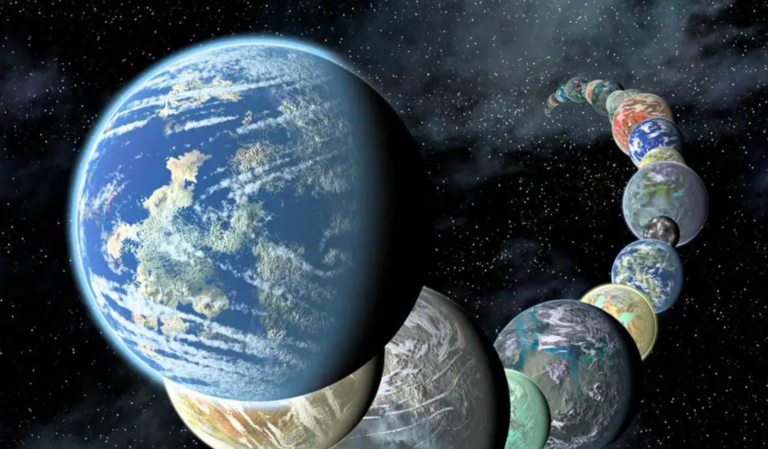NASA Unveils 17 Exoplanets Beyond Our Solar System Potentially Hosting Liquid Water Oceans.
In a groundbreaking investigation, NASA has expanded its quest for extraterrestrial life by pinpointing 17 exoplanets that might possess oceans of liquid water beneath their icy exteriors. These findings suggest the possibility of occasional geyser eruptions, akin to phenomena observed in our solar system on moons such as Europa and Enceladus.
Dr. Lynnae Quick, leading the study at NASA’s Goddard Space Flight Center, concentrated on Earth-sized exoplanets with lower density, indicative of substantial ice and water content. Despite being colder than Earth, these planets could potentially have ice-covered surfaces concealing liquid oceans sustained by internal heating mechanisms. This heating might originate from the decay of radioactive elements and tidal forces from their host stars.
The research team recalibrated each exoplanet’s surface temperature using Europa and Enceladus as benchmarks, factoring in their known surface brightness and other characteristics. They also gauged the total internal heating by combining tidal heat with that anticipated from radioactive activity. This approach allowed them to estimate ice layer thickness and the potential for geyser activity on these distant worlds.
The outcomes are captivating. These exoplanets’ surface temperatures are projected to be up to 60 degrees Fahrenheit (about 33 degrees Celsius) colder than previous estimates. Ice shell thickness varies significantly, ranging from about 190 feet (58 meters) for Proxima Centauri b to 24 miles (38.6 kilometers) for MOA 2007 BLG 192Lb. This variation impacts the likelihood and intensity of geyser activity, ranging from minimal to potentially thousands of times more active than Europa.
Particularly intriguing are two exoplanets, Proxima Centauri b and LHS 1140 b, due to their proximity and potential for high rates of geyser activity. These eruptions might be observable with telescopes when the exoplanets pass in front of their stars, dimming or blocking specific colors of starlight with water vapor from the geysers. Detecting water vapor sporadically could indicate cryovolcanic eruptions, offering insights into the exoplanets’ potential to support life.
The study also proposes that elements and compounds in the water may be detectable through their absorption of specific light colors. This could enable scientists to analyze geyser composition and assess the habitability potential of these exoplanets. For planets like Proxima Centauri b, which do not transit their stars from our perspective, geyser activity might still be detectable with powerful telescopes measuring reflected light.
Funded by NASA’s Habitable Worlds Program, the University of Washington’s Astrobiology Program, and the Virtual Planetary Laboratory, this research signifies a significant stride in exploring habitable worlds beyond our solar system. It not only enhances our understanding of potential life-supporting environments but also paves the way for future explorations and studies.
As we persist in our cosmic exploration, discoveries like these underscore the vast and diverse nature of planetary systems in our galaxy. The prospect of habitable oceans beneath icy surfaces on distant exoplanets challenges our existing comprehension of life-sustaining environments and stokes our curiosity about the universe’s enigmas.
Reference(s): NASA
Do not forget to share your opinion with us to provide you with the best posts !





0 Comments